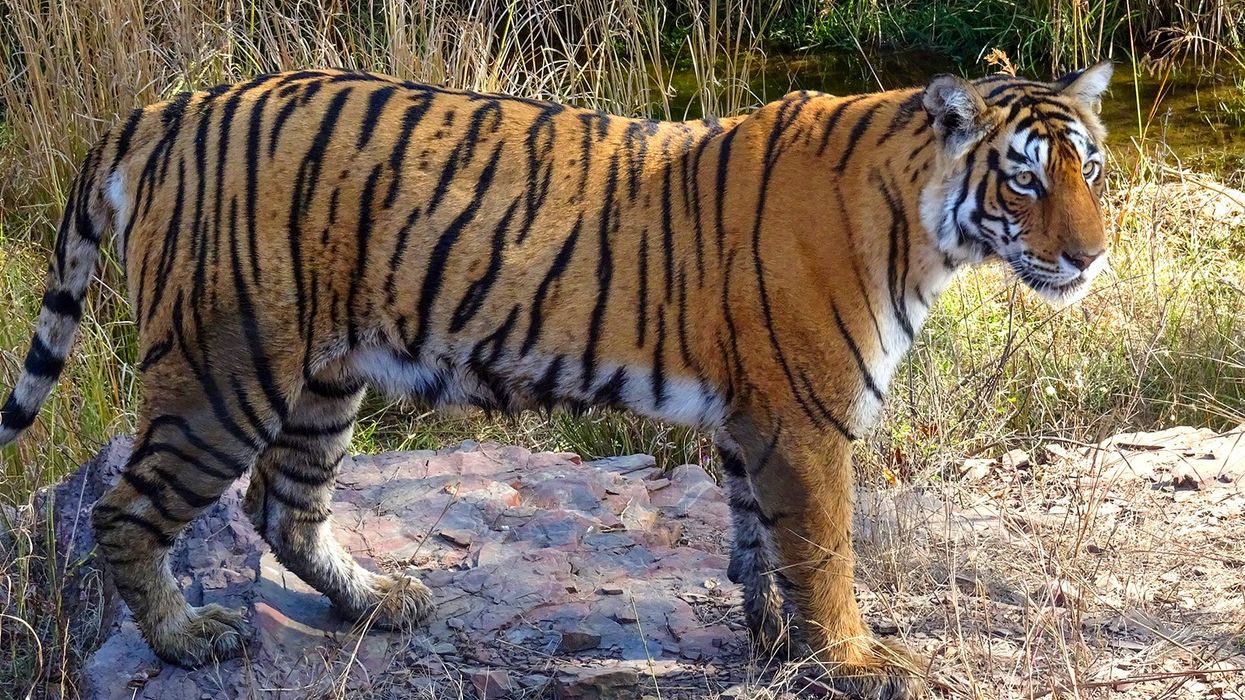(CNN) — Tigers once roamed across Asia, their numbers as high as 100,000 at the start of the 20th century, before the species plummeted to the brink of extinction.
By 2006, their population in India — home to the majority of the world's remaining wild tigers — hit a record low of just 1,411 individuals.
But decades of conservation efforts appear to have finally paid off. India's tigers have more than doubled since then, reaching 3,167 last year, according to the latest tiger census released Sunday.
That's about 70 percent of the world's wild tiger population, which stands at around 4,500, according to the World Wildlife Fund (WWF).
The resurgence of Indian tigers represents a triumph for conservationists, and a ray of hope for other countries struggling to boost wildlife numbers.
The report was released alongside celebrations to mark the 50th anniversary of Project Tiger, the government's conservation program launched in 1973.
"We have thousands of years of history related to tigers ... The tiger is considered our brother in many tribes," said Prime Minister Narendra Modi in an address on Sunday. "A better future for humanity is only possible when our environments are protected and our biodiversity continues to expand."
Modi also visited two tiger reserves on Sunday, with photos showing the leader decked in a safari hat and camouflage clothing.
Tigers in decline
Tiger numbers began falling steeply in the 1940s as human populations boomed. Agricultural expansion, deforestation, and infrastructure have fragmented tiger habitats, according to the WWF — particularly devastating given tigers are solitary animals who require large territories to roam and hunt.
Today, tigers exist on just 7 percent of the land they used to occupy, according to the WWF.
This dwindling space has meant a rise in human-tiger conflict, with multiple incidents in the past few decades of tigers attacking humans and entering villages in search of food. And they're not alone — India's endangered elephants, too, frequently wander into farmlands and devour crops.
Though environmental degradation is a problem facing countries worldwide, India's exploding population poses a unique challenge. In 1971, the country had 547 million people; it now has 1.4 billion, and is set to overtake China to become the world's most populous country this year.
Unregulated poaching in the 1980s further accelerated the decline in tiger numbers. Tigers were hunted for sport, status and consumption, with their bone and other parts often used in traditional Chinese medicine. India officially banned tiger hunting in 1972, but it remains a major threat, with illegal poaching blamed for the complete extinction of tigers within an Indian reserve in 2005.
Success story
Efforts to reverse the trend has seen India develop 53 tiger reserves covering nearly 75,800 square kilometers (about 7.5 million hectares), up from just nine reserves at the start of Project Tiger.
Authorities have relocated and paid entire villages to make space for tigers, and created wildlife corridors to link their fragmented habitats.
The government has also invested in technology like drones, camera traps and software systems to keep track of tiger populations, movements and behaviors.
There are plenty of challenges ahead, the WWF cautioned. The worsening climate crisis spells trouble for vulnerable habitats. Many tiger reserves and protected areas are "small islands in a vast sea of ecologically unsustainable land use," with human activity encroaching on tiger environments. And illegal poaching continues despite strict laws.
Still, the return of the tiger population is encouraging — and India is beginning to share its conservation practices with other countries with declining tiger numbers. In recent years, Delhi has signed bilateral agreements and launched initiatives including conservation workshops with Thailand, Cambodia, Malaysia, Bangladesh and Bhutan.
And, as Modi pointed out in his Sunday address, similar successes are being seen with other species; India welcomed its first newborn cheetahs in March more than 70 years after the big cats were declared officially extinct in the country.
The cubs were born to two rehabilitated cheetahs brought from Namibia to India, as part of a government plan to re-home 50 individuals over the next five years.
The-CNN-Wire
™ & © 2023 Cable News Network, Inc., a Warner Bros. Discovery Company. All rights reserved.


















































